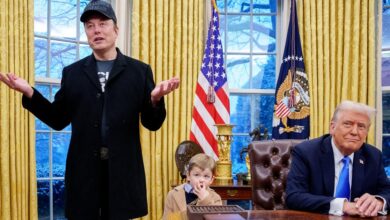Clearing the Air on Tariffs and Trade Deficits

Trade deficits have been a hot topic for debate, with many arguing that they are harmful to the economy. However, economist David Henderson presents a different perspective in his latest Hoover article, “Clearing The Air On Tariffs And Trade Deficits.” He breaks down the argument step by step, starting with the question of whether a trade deficit with a specific country is inherently bad.
Henderson uses a relatable example to illustrate his point. Just like how individuals may spend more on groceries from a store like Safeway than Safeway spends on their output, countries can have trade deficits with each other without it being a problem. In 2024, the United States had a trade deficit of $36 billion with Canada, a far cry from the $100 billion figure President Trump seemed to have conjured. Henderson emphasizes that having a trade deficit does not mean we are subsidizing other countries, just like how individuals having a trade surplus with their employers is not a cause for concern.
Furthermore, Henderson addresses the overall trade deficit of the United States with the rest of the world in 2024, amounting to $0.92 trillion. He highlights that the money from this deficit largely comes back to the US in the form of investment. Foreigners invest in US government bonds, land, equipment, and direct investments, seeing the US as a safe haven for their money. Henderson points out the irony in Trump’s stance on foreign investment in the US while decrying the trade deficit, noting that the two are interconnected.
In response to President Trump’s plan for reciprocal tariffs on imports, Henderson criticizes the lack of consideration for the tariff rates charged by other countries. He argues that even if all countries imposed higher tariffs on US exports, the best strategy for the US government would be to cut tariffs to zero. Henderson explains that retaliatory tariffs only end up hurting consumers more than they benefit producers, making zero tariffs the most optimal choice for overall economic welfare.
Drawing on the wisdom of President Reagan and economist Joan Robinson, Henderson uses metaphors to drive home his point about the futility of retaliatory tariffs. Reagan’s analogy of shooting holes in a lifeboat and Robinson’s question about putting rocks in harbors illustrate the counterproductive nature of escalating trade conflicts.
In conclusion, Henderson’s article challenges conventional wisdom on trade deficits and tariffs, offering a fresh perspective backed by economic reasoning and evidence. The article provides valuable insights for policymakers and the public to consider in debates surrounding international trade policies.





